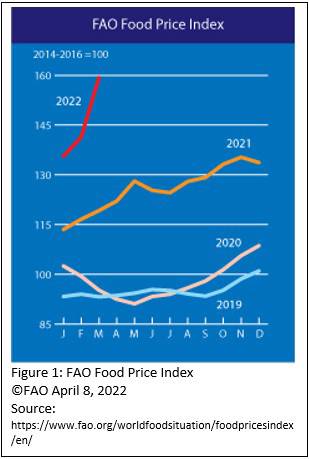DUBAI – Global food prices are soaring. The United Nations Food and Agriculture Organization’s Food Price Index – which covers a basket of basic food commodities (cereals, meat, dairy, vegetable oils, and sugar) – reached an all-time high of 159.7 in March, up from 141.1 the previous month. While it declined slightly in April, to 158.5, ongoing developments – not least Russia’s war in Ukraine – are set to keep driving prices to new highs, with devastating implications for global hunger.
The COVID-19 pandemic exposed the fragility and dysfunctionality of the world’s food systems, with movement restrictions and supply-chain disruptions driving up prices, damaging rural livelihoods, and exacerbating food insecurity, especially for the poor. Now, the war in Ukraine is compounding these challenges, because both sides are major exporters of food, fuel, and fertilizer.

Moreover, climate change poses an even larger threat to global food security. Already, extreme weather like heatwaves, floods, and prolonged droughts has triggered shocks to agricultural production and food availability. As temperatures rise, these shocks will become increasingly frequent and powerful. If global warming crosses the 1.5° Celsius threshold (relative to Earth’s pre-industrial temperature), they are likely to become catastrophic.
To continue reading, register now.
As a registered user, you can enjoy more PS content every month – for free.
Register
or
Subscribe now for unlimited access to everything PS has to offer.
Already have an account?
Log in


